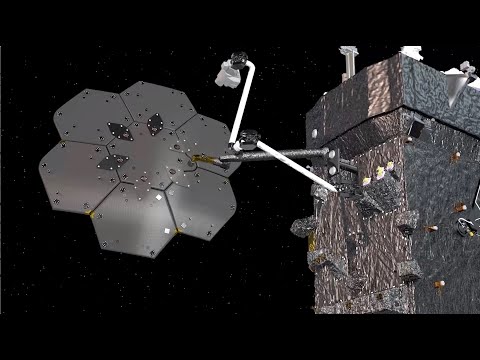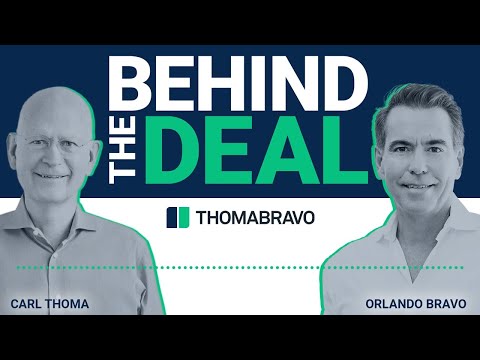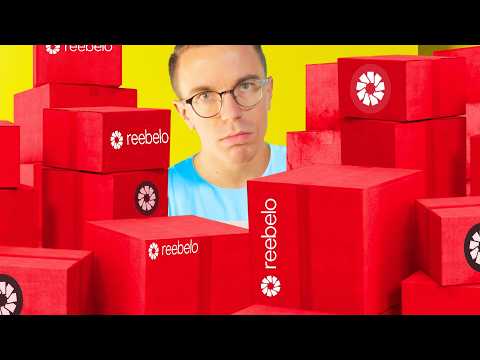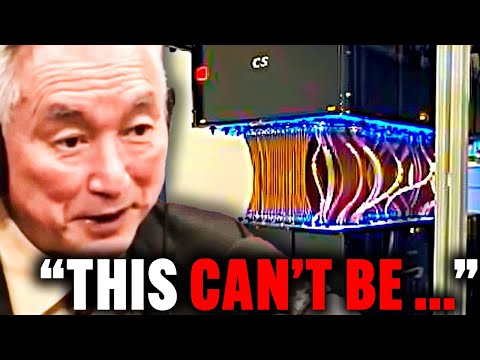Pass The Torque S2 E8: Commercial Partnerships — Maxar's Laurie Chappell

Hello, and welcome to pass the torque, i'm your host katie cadre. Since partnerships, are such an important part of what we do here at nasa. This week we're speaking with laurie chappelle, of maxar, technologies. Don't forget you can leave a question for lori in the comments below, for a chance to have them answered later this week. Let's jump in with the first question. Can you tell us about what you do and about maxar. I lead civil space business development, activities. At max, r. Maxar. Is a trusted partner, in earth intelligence. And space infrastructure. On the space infrastructure. Side of it. We do, satellite, manufacturing. Which, is. Dating back 60, years, based on the commercial, communications. Satellite, industry. So we've translated. The, capabilities. Delivered, for the, commercial. Communications. Industry. Into. Capabilities. For exploration. Such as the. Psyche, mission, that will travel till, to a, metal asteroid. The osam, one mission. And, um now the power and propulsion. Element. For the lunar gateway. On the earth intelligence. Side we're leaders, in earth observation. And, data analytics. So we have a constellation. Of satellites. That, does earth observation. And we're bringing a new constellation. Online. In, early next year which is called legion. Which will provide, even. More capability. To, our, existing, world-leading. Earth observation. Satellite, constellation. What was your background, before getting to where you are at maxar. I grew up in canada. And. All of my education, was. In canada, at the university, of toronto, so i took a degree. In, aerospace. Engineering, both. Bachelor. And master's, degrees, in aerospace, engineering. And that's really where i became passionate, about space robotics. So. At the university, of toronto. They. Run a class, called space systems design, where, leaders, from, industry, come in to. Teach the class. And. Do like real-life. Spacecraft. Robotic, missions, so, the year i was doing it we were actually. Working on, a robotic, servicing, mission for the hubble space telescope. Which is pretty cool because. Later on in my career, i actually got to work on, a proposed, mission to do. Exactly, that in real life so it was very relevant. And, i became passionate, about. Space robotics. In university. So then. After completing, my master's, degree, i went to work at the company, that was called spar, at the time so the makers, of the. Canadarm. For the. The, space shuttle. Uh it's not now called mda. So i spent about 15, years at mda. And i was. Super, lucky. Uh the, my timing. Of arriving, there because. I got to be involved, in the, um, final. Design, stages. Of the, space station, robotics. So the. Canadarm2. And the special purpose dextrous, manipulator. Or dexter. And the. Mbs, mobile-based. System, so i got to be involved in the the testing, of that, and then, the. Launch, and deployment. And the first operation. So, being at the mission control, center and at johnson, space center. While the. Space station robotics, were being, uh installed. By, canadian, astronaut, chris hadfield. Was. Really really an amazing, experience. So. That was all through the canadian, space agency. And then, um. After. After, moving on from working on the robotics, operations. I spent some time developing. Robotic. Rovers. So that that's also through the canadian, space agency. So, uh rovers, for mars rovers for the moon making, prototypes. That was all in the. Constellation. Era, of uh, we're going to the moon, that sort of thing, and. Then, i got the opportunity. To. Join. Maxar, which was called space systems roral at the time, so. I. Had the opportunity. To. Move from toronto, to california. For a one-year, assignment. And. It's now been, uh seven years. Because, the, uh. I'm still here my husband and i both came here, and. I'm still here, because i'm just really excited, about the missions we're working on the osam, one mission, spider, mission.
Sampler, Mission, power propulsion, element there's just, so much going on. And, also i love the, outdoors, and nature, and, you can't beat the weather here, so. A, circuit, circuitous. Path to get here but, i'm really having a ton of fun. What kind of work does maxar do with nexus. What is maxar's, involvement, with osam one. So for the osam 1 mission we're building the spacecraft. Bus. Which is the. System, that. Provides, power, communications. And other services. To the, robotic, servicing, payload. And as part of the robotic servicing, payload we're providing, two robotic, arms, that will. Facilitate. Satellite, servicing, operations. As well as. The refueling. Operations. In addition, to the, satellite servicing, arms we're also providing. A robotic, system called spider. So, spyder, is a next generation. Robotic, system that will be used for, in-space, assembly. So, on osam, one we're going to use spider, to demonstrate. The, uh, in space assembly. Of a large, reflector. So, an antenna, dish, that, will bring up in pieces. And then we'll, put together, to make, a structure, much larger, than would, fit, in a. Single, launch vehicle, fairing. So. That sort of technology. Can be used to make, really. Large powerful, communication. Systems. Or you can imagine. Using it to do, space assembly, of a telescope. Or, really. Habitats. Anything, that needs to be bigger, than can fit in one rocket at a time. So, uh, we're doing that, and then also we're working with the tethers, unlimited. Who's, uh. Gonna be as part of, osam, one launching, the maker set, and that's gonna, demonstrate. Uh additive, manufacturing. Technology. To, grow, a composite, beam, while we're. Up there in space. What other work does maxar do with nasa, can you talk about gateway. Maxstar is providing, the power and propulsion. Element. Of the lunar gateway, which combined with the halo. Element, will, provide, the. First piece of the gateway, that will be used to. Support, the sustained. Return to the moon, so, the ppe. Is, provides, the, power, the communications. And the, propulsion. Elements, to that gateway. And it's, really built off our heritage. Commercial, communication. Satellites. So, we're world leaders, in solar electric propulsion. And, uh, the um, the, ppe. Is a solar electric propulsion. On steroids. So the most powerful. Solar electric propulsion, system, that will have flown, to date. When it when it's launched. We're also, working. On the. Dianetics. Team, to support, the. First, american, woman and next american man to return, to the, surface of the moon with the human landing system, so we're providing, the. Power. System, the communication.
System, And some thermal management. Systems, for the. Dynetx, hls, team. In addition to that we're providing, the spacecraft. For the. Uh psyche mission, which is a really exciting mission to go explore, an all-metal. Asteroid. Um. And uh figure out uh where where this asteroid. Originated. Can you tell us about maxar's, robotic, arms. Maxar has over 20 years of space robotics, heritage. Which started, out with. Providing. Arms, to nasa, for the mars, exploration, missions. So. We've provided six robotic, arms to nasa over the years for mars exploration. And. Two of them actually are still operating, on the surface, of mars. One of which is the. Insight lander robotic, arm, which, was, initially, used to, place some very sensitive, instruments, on the surface, of mars. And, now is being used actually in a contingency. Role to, try and. Convince, the mole instrument. To do molding, so it's. It's helping, to keep them all in place, and. Convince it to. Move. Further down a small, hole. Also. We provided, the arm, on the mars. Curiosity. Rover. And. That arm is used, to, it has a whole bunch of instruments, on the end of it, and, the, arm is used to move the instruments, around. Such as a drill etc. So when, the scientists. Want to. Sample, at a particular, location. The arm is used to, move the instruments, to that location. And perform the operation. Then. Upcoming. Is the. Launch, of, nasa's, perseverance. Rover, and we're excited about that, because, maxar, provided, the sample handling, assembly. So, that's a robotic, assembly, that will be used to manipulate. The sample tubes that are collected by the rover. And. Ultimately, those, are the tubes, that will, be picked up by a subsequent, mission that will come. And. Pick up those tubes and then return them to earth, for the, first, ever. Mars, sample return, mission, so. That's, quite exciting. And. We're also headed to the moon. So. We were selected, to provide, a robotic, arm called, sampler. Which will launch on one of the upcoming, clips missions. So this is a. Commercial, mission. To. Go to the surface of the moon. And sampler, will help scientists, to understand. The, properties. Of the, surface of the moon. How do you view the government's, role in space. What about industries, role. So i think the, government's. Role in space, is. To, harness, the, capability. That they have, to. Invest. In things over the long term. And, invest significant, amounts of money. Over, long periods, of time, so for example. The. Apollo, program, was a, a multi-year. Um. Multi-billion. Dollar, program. That. Needed, the commitment. Of government, to, get it underway. And, to. Make it happen. So, the, the really hard the really long term the visionary, things, where, there's not necessarily. A business case. Yet. Those are the, types of things the government, can do so for example. Another one is the, international, space station, so. Getting. Multinational. Partners, together, to build this, gigantic. Infrastructure. In space, and. Show how we can do it pave the way. Show that it's. Technically, feasible. And. We see now, the. Move that. Towards, commercial, business, doing. Having. For example millions, of people living and working in space. As a, vision, so, nasa. Laid down the framework, showed all the everything's, technologically. Possible. And now, a commercial, industry, can move in, and.
Do. Uh habitats, in low earth orbit for example. Uh commercially. So. Now, uh, now that nasa's. Sort of uh proven. Low earth orbit, is onto the moon onto the mars, so, with the. Funding. And vision of nasa, to go to the moon for example. And. Set up, things like the human landing system, so, let's fund. The first woman and next american, man to go back to the surface of the moon. Um, but with the partnership, from commercial, industry. So. In this case nasa, funds, the, uh. The development. And the first phase of it and then commercial, industry, can take over as it becomes, a repeating. Service. The. Fortunately, unfortunately. Industry, has to make money so. Until there's a business, case an established, market, it's really hard for. Industry, to, take on. Visionary. Projects. Unless you, have a. Billionaire, or two. Involved with your company, so. I think it's, a government's, role to. Establish, the long-term, thinking, implement, the, the multi-year, plans, that, really, get things off the ground. Which then, in turn can be picked up by commercial, industry. And made, essentially, into, a, for-profit. Service. Where the government, can be one of many customers. How do you think the commercialization. Of space, will look in the near and long-term, futures. We can see. Even, even as we speak, increased. Commercialization. Of space, there's commercial. Space companies, popping up, all around. Our company, maxar, has, the location, i'm in is in the heart of silicon valley. And there's. Hundreds, of commercial. Space. Companies, here, that are, selling. Various products, and services, into the space industry. So, in the short term we've already seen the. The success, of the. Crew dragon, which is uh, the commercialization. Of taking. Astronauts. To the space station. So. You can see, an increase, in just. The, ability, for, commercial, industry. To, sell. Uh transportation. Services. To, the, even the general public, so, in the first instance, it was the. Nasa astronauts. But you can envision. Like very soon, there'll be. Space, tourism. Where commercial, industry, can. Provide, transportation. To. The space station, or even commercial. Habitats. In leo. And. Um, uh, provide it just like you can buy a, ticket on an airplane, today you'll be able to ride a, buy a ticket to space, and. Go visit your, your, space hotel. And uh i think with the demonstration. Of the, the crew dragon, that. It looks like that's not so far off. And, um, we do know that. Nasa is investing, in enabling, such capabilities. By. Um. Sponsoring. Like the first instances, and demonstrations. Of commercial. Habitats. In leo. That will. Provide, almost a. Tipping point situation. To. To. Start, the these commercial, activities. In low earth orbit. And then in the long term, it's, only going to expand, so you might imagine. Commercial. Services, expanding, to the moon and mars, so. Commercial. Mining, extraction. Of resources. On the moon to provide, rocket, propellant. Or even. Space tourism, on the moon, as, the. Humans. Make, sustainable. Presence on the moon there's going to be services, required, like construction. Refueling. That sort of thing.
So That, that will open up a whole, space economy. You can imagine, with the, in space, assembly. And satellite, servicing, capabilities. As there's more and more commercial. Activity. In the marketplace. There's a whole, infrastructure. That's needed to support, that so the, commercial. Satellite, servicing. Commercial, refueling. Commercial. In space assembly. With the. Commercial, robotics, services. I think is going to be a key part of, building up that long-term. Infrastructure. And supporting, the continued, human presence, in. Space. In leo, and, moon and mars. What is appealing, to companies, about working in the space arena. What is appealing to you personally. I think, what's, appealing to companies, and to me about working in the, space arena, is the chance to be part of this big vision, of human, exploration. And. Pushing. The boundaries. Of where, humans. Live, and work. For example, in the. Earlier, times, the, big push was to, explore. Earth find the new world, or push west, with the railroads, that sort of thing, now we're on the precipice. Of becoming, a, multi-planetary. Species. So, the chance, to. Explore, and see what's out there and then also. Push the. Human. Exploration. And. Human, expansion, forward, i think is uh, is really exciting, opportunity. Both for, uh commercial, industry. And for. Uh, people on a personal, level. And then the second part of that is the uh, the technology. Required, to do, some of those things, is. Really challenging. So, it's a, hard problem where you get to, solve, pretty. Complex, technological. Challenges. But all in the name of the vision, for, human exploration. So i think those combinations. Work together to make it make it a really, exciting, arena. What do you do for fun. I really love to do anything that's, involving the outdoors, you can see i'm outdoors, my, home office right now is. Is. Outdoors. So. Anything to do with the, hiking. Biking. Kayaking. That sort of thing, so. Here in california. There's a lot of. Really, spectacular. Backpacking. Available, so we're about, three hours from yosemite, national, park, so, my husband and i spend a lot of time. Backpacking. In yosemite. And the sierra nevada. And just. Exploring, in these. Amazing. Wilderness, areas. We also, own a tandem, kayak. So we take that, to. The ocean. Or a, nearby. Wetlands, area where we kayak, amongst the uh, um. Sea lions, and otters. And pelicans. And a whole bunch of, wildlife. So basically. Anything to do with the outdoors. Is. Where my passion lies. Thanks so much lori, and thank you for tuning in to another episode of pass the torque. Don't forget you can leave a question for lori in the comments below for a chance to have it answered, later this week. Tune back in next week for another brand new episode where we talk with nasa administrator. Jim bridenstine. See you then. For show and tell i have this. Lego. Model of the international, space station. So. This was given to me by, a colleague. Who i worked with actually. On the. Design and development, of the robotics. For the international, space station, so, i have my own in-space, assembly, project, that, needs to get underway. And my plan is to. Build this in the. Order, that it was actually built in real life, because this is, near and dear to my heart. Having supported, the, initial. Assembly, missions, of the international, space station, from the. Mission control center, at, johnson, space center. While the robotic, space robotics, was used to, assemble, the international, space station. Though. I think i might need some tips from my nephews, who are lego experts, on how to actually put this thing together, but i will put it together, in the, correct historical, order that it was actually built in real. Life.
2020-08-28 00:44


